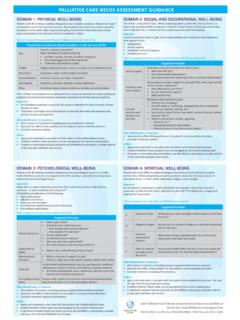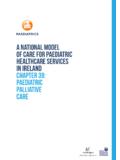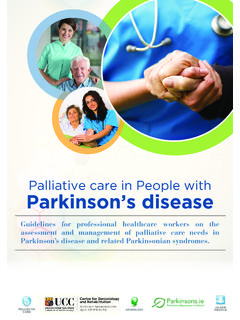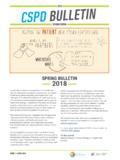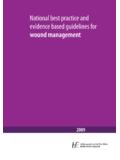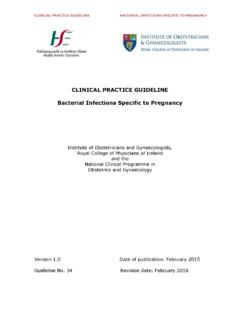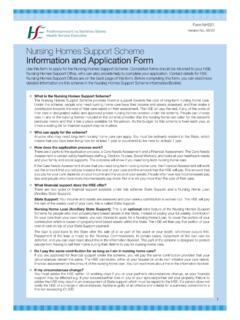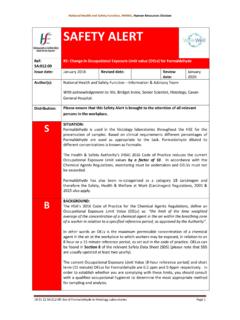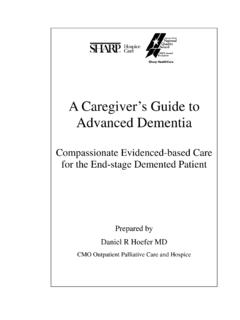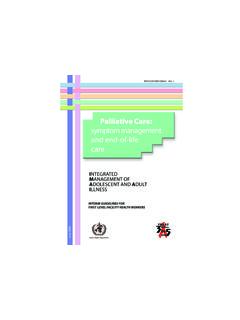Transcription of Palliative Care Needs Assessment Guidance
1 Palliative care Needs Assessment GuidanceNational Clinical Programme for Palliative care , Clinical Strategy and Programmes DivisionThe Palliative care Needs Assessment Guidance was prepared by the National Clinical Programmefor Palliative care Working Group: Dr Karen Ryan, Clinical Lead, Ms Lorna Peelo-Kilroe, Nursing Lead, Palliative care Clinical Programme Ms Sin ad Fitzpatrick, Programme Manager, Palliative care Clinical Programme Dr Aisling O Gorman, Regional Lead, HSE NE Dr Stephen Higgins, Regional Lead, HSE DML Dr Brian Creedon, Regional Lead, HSE South Dr Feargal Twomey, Regional Lead, HSE West Dr Mary Devins, Paediatric Lead Dr Barry Cosgrove GP Lead Ms Ger Tracey, Nursing Representative Ms Mary Marsden, Nursing Representative Ms Shirley Real/Deirdre Rowe, Therapy Professions Representatives Ms Valerie Keane, Social Work Representative Ms Grainne Tipping/ Ann O Connor, Pharmacy Representative Ms Eileen O Leary, HSE Representative Ms Mo Flynn, Voluntary Hospices Group Representative Ms Sheilagh Reaper Reynolds.
2 HSE Representative Acute Hospitals Division Published in July 2014 by: The National Clinical Programme for Palliative care , HSE Clinical Strategyand Programmes number: date: January 2016 Contact information: document and other information regarding the programme is available from the nationalprogramme for Palliative care website: Needs Assessment 20142We all want to ensure that people with life -limiting conditions experience the best possible quality oflife. The Palliative care Needs Assessment Guidance is one way to help healthcare professionalsachieve this goal. It serves as a framework that enables staff build up a holistic picture of patient andfamily Needs and strengths. The framework considers all Needs and not just those that individualservices are interested in, thereby improving communication and integrated working betweenservices.
3 It is also acts a source of valuable information to specialist Palliative care services whentheir involvement is sought. By helping patients and families identify their concerns, teams will beable to develop a care plan that is tailored to an individual patient s Needs and that aims to improveoutcomes by identifying and managing issues quickly. In this way, real differences can be made atcritically important times in patients lives. I hope that you find this Guidance useful and encourageyou to incorporate its use in your daily Karen Ryan, FRCPI, Clinical Lead, National Clinical Programme for PalliativeCareNCPPC Needs Assessment 20143 Palliative care is an approach that improves the quality of life of people and their families facing theproblems associated with life -limiting illness, through the prevention and relief of suffering by meansof early identification and impeccable Assessment and treatment of pain and other problems, physical,psychosocial and spiritual.
4 The Palliative care approach aims to promote physical psychological,social and spiritual well-being. It is a vital and integral part of all clinical practice, whatever the illnessor its stage, informed by a knowledge and practice of Palliative care principles. A life -limiting condition means a condition, illness or disease which: Is progressive and fatal; and The progress of which cannot be reversed by treatmentAll health and social care professionals working with people with life -limiting conditions are involvedin providing Palliative care . This care is given throughout the person s journey up to and includingdeath, the care of the deceased and bereavement support. For many people with life -limitingconditions, Palliative care delivered by their usual treating team is sufficient to meet their Needs . Some people have more complex physical, psychological, social or spiritual problems.
5 The severityand/or intractable nature of these complex Palliative care problems may exceed the resources of theprimary treating team and may require referral to the specialist Palliative care service. These serviceshave Palliative care as their core speciality and are provided by an inter-disciplinary team, under thedirection of a consultant physician in Palliative medicine, in partnership with the current treating is recognised that there are grey areas and individual referrals may be discussed withthe local specialist Palliative care service to discuss their appropriateness. Specialistpalliative care teams are always available to advise or support other professionals in theirdelivery of Palliative document aims to provide Guidance to health and social care professionals providingor co-ordinating the current and future care of people with life -limiting conditions.
6 It is intendedto aid professionals in assessing the current and future Palliative care Needs of patients withlife-limiting conditions and in deciding when it is appropriate to refer to a specialist palliativecare Guidance has been developed as part of the National Clinical Programme for PalliativeCare within the Clinical Strategy and Programmes Division and has been informed bynational consultation with multidisciplinary criteria for referral to specialist Palliative care servicesPatients with both: a life -limiting condition and, current or anticipated complexities relating to symptom control, end of life care planningor other physical, psychosocial or spiritual care Needs that cannot reasonably be met bythe current care provider(s).NCPPC Needs Assessment 20144 Who, when, where and what?Who should be assessed?All people with life -limiting conditions irrespective of age or setting.
7 This Guidance focuses onidentifying the Needs of adult patients. Children and adolescents requiring Palliative care have theirown unique Needs which are outside the remit of this document. Local specialist Palliative care teamsare always available to discuss individual cases. It is recognised that carers Needs may well havean impact on the level of care required and may prompt referral to specialist Palliative should the Assessment take place?Good clinical practice dictates that Assessment should be an ongoing process throughout the courseof a patient s illness. We suggest that assessments be carried out at key transition points in thepatient pathway, for example at diagnosis of a life -limiting condition, at episodes of significant progression/exacerbation of disease, a significant change in the patient s family/social support, a significant change in functional status, at patient or family request, at end of should the Assessment take place?
8 Assessing the Palliative care Needs for a patient can be carried out in any physical setting that ensurescomfort and privacy and could include the patient s home or hospital should undertake the Assessment ?The patient s current health and social care team is responsible for ensuring that the assessmenttakes place. For continuity of care , it is often helpful to have a single team member responsible forassessing an individual s Needs . In line with good clinical governance, the patient s physician shouldbe involved in the decision to carry out an Assessment . The assessor should be a clinical professionalwith an appropriate level of knowledge of the disease, its symptoms, treatment and likely assessor should have reached an agreed level of competence in key aspects of the action follows the Assessment ?Where specific need is identified or anticipated, establish whether this can be met by the currenthealth and social care team or whether referral to additional services is on the appropriate action Assessment may trigger the implementation of other care the outcome is to refer to the specialist Palliative care service this should be discussed with thepatient and consent sought for referral and sharing of informationNCPPC Needs Assessment 20145 Figure 1 Palliative care Needs Assessment Algorithm: when should Palliative care needsassessment take place?
9 Episode ofdisease progression/ exacerbation End of life Significant change in family/social support Significant change in functional status Patient or family request Assess Needs by referring to the following domains: Physical well-being Social and occupational well-being Psychological well-being Spiritual well-being Can need be met by the current treating team Devise care plan to meet need Refer to Specialist Palliative care Services: Community, Out Patients or In Patients Diagnosis of life -limiting condition YesNoNCPPC Needs Assessment 20146 DOMAIN 1 PHYSICAL WELLBEING: SUGGESTED PROMPTSSUGGESTED PROMPTS DOMAIN 3 PSYCHOLOGICAL WELLBEING: SUGGESTED PROMPTSDOMAIN 4 SPIRITUAL WELL BEING: SUGGESTED PROMPTSNCPPC Needs Assessment 20147 Domain 1: Physical Well-beingPatients with life limiting conditions frequently have multiple symptoms.
10 Patient self report ofsymptoms varies from person to person. Some physical symptoms are readily reported by patientswhile others often require prompting. Some of the frequently encountered physical problems in thelast year of life are outlined in table 2 Frequently Encountered Physical Problems in the Last Year of LifeThis is neither a prescriptive nor an exhaustive list- it serves to illustrate the variety of physicalproblems encountered and need for systematic Assessment to identify physical problemsApproach: An introductory question to prompt the person to identify the physical Needs of most concern tothem. Thereafter a thorough and careful systems review will determine the presence and severity ofphysical identification of symptoms: Elicit a history of symptoms including previous treatments received. Ascertain the effect of the problem on the patient s normal activities/function.
